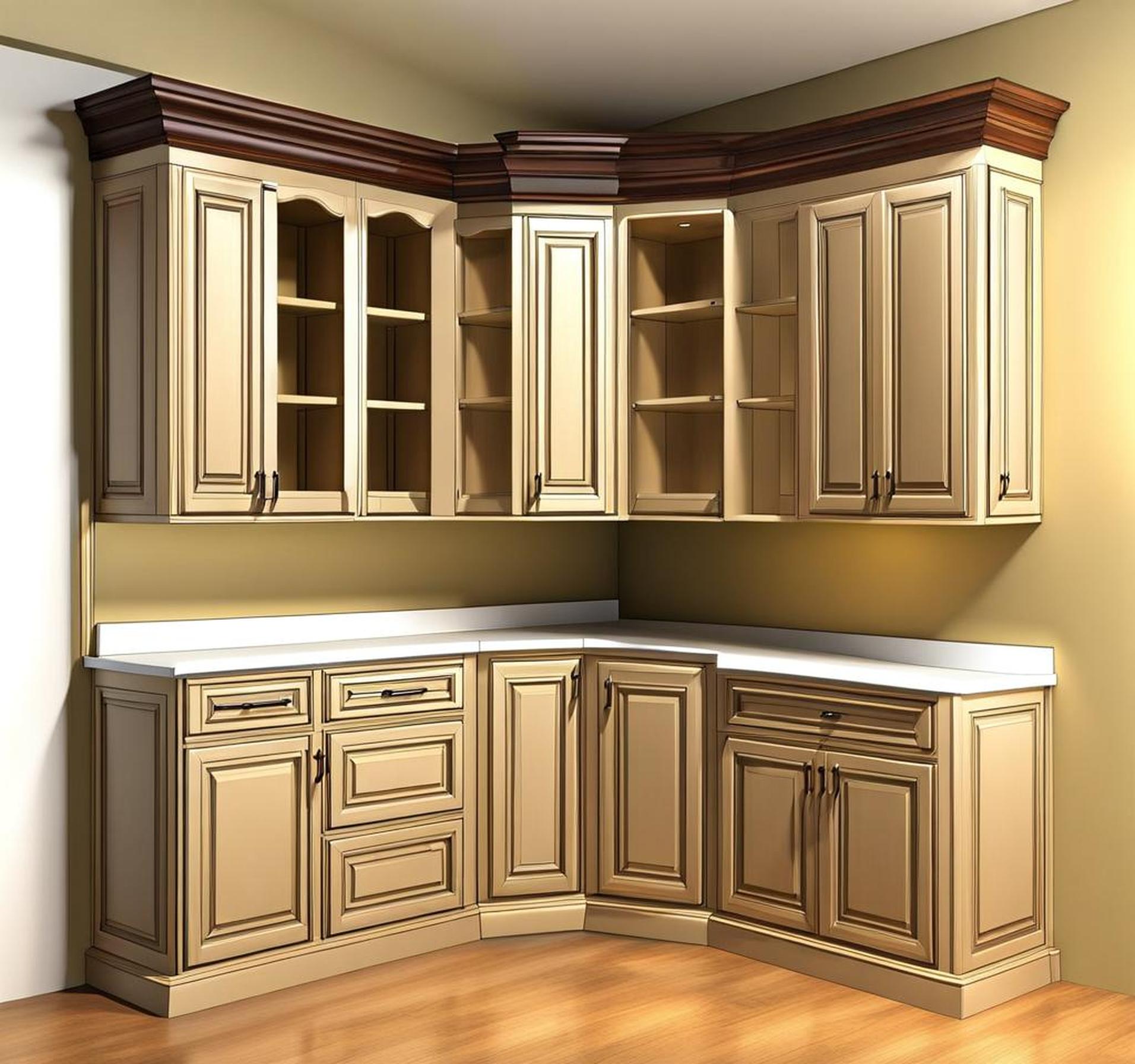When designing a kitchen, utilizing corner space efficiently is key to maximizing storage capacity. Corner wall cabinets provide an excellent storage solution for corner areas, taking advantage of unused space with their unique dimensions and angled design.
Understanding the proper measurements and dimensions will ensure you select the ideal corner cabinet to optimize your kitchen’s storage potential.
Typical Dimensions
One of the most important factors to consider when looking at corner wall cabinets is the dimensions. Let’s take a closer look at the standard width, height, and depth of these uniquely shaped cabinets.
Width
Corner wall cabinets are usually about 24 inches wide. This is wider than a typical 12-15 inch wall cabinet, allowing for more storage capacity. The extra width fits the diagonal space of a corner. Custom widths are also possible if your corner space is larger or smaller than 24 inches.
Height
For height, standard options are typically 30, 36, or 42 inches tall. This matches the usual height of base cabinets and wall cabinets to create a uniform, seamless look. The height you choose may depend on your room’s ceilings and overall kitchen design.

Depth
One of the biggest differences with corner cabinets is the depth, which is much greater than a standard 12-15 inch deep wall cabinet. Corner cabinets can extend up to 18-24 inches deep along the back wall, maximizing storage. This extra depth allows the installation of a large lazy susan and provides excellent access to the notoriously hard-to-reach back corner area.
Interior Design
Along with external measurements, interior fittings and accessories also impact storage capacity. Let’s look at popular options for shelving and storage accessories inside corner cabinets.
Shelves
The number of adjustable shelves inside the cabinet can vary based on the height. A 30 inch corner unit may have two shelves, while a 42 inch may have three. Custom or additional shelves are also options for further configuration.
Storage Accessories
Due to the depth, a large “lazy susan” – a circular rotating tray – is commonly installed to provide easy access to items along the back wall. Other options like pull-out shelves, specialized drawers, or wire storage racks can also maximize usable space.
Weight Considerations
While corner cabinets offer ample storage, they have some weight limitations to keep in mind.
Heavy items like cans or appliances should not be loaded into corner cabinets, especially near the top. Most cabinets have a weight capacity around 100 pounds. Heavier items are best kept on lower shelves or in base cabinets.
Glass doors and shelves should also be used with care, avoiding slamming and extreme loads. Overloading corner cabinets can lead to potential tipping or damage.
Installation Tips
Installing corner wall cabinets requires precision measurements and securing to wall studs for adequate support.
Measuring Corner Space
Since corners are rarely perfectly square, all measurements should be made diagonally to ensure an accurate fit. Use a level and tape measure to capture the true width and height. Account for any uneven walls or floors.
Mounting the Cabinet
Start the installation by locating studs and attaching a piece of wood securely to the wall as a support board. Lift the cabinet into place, verifying it is level. Finally, drill screws through the cabinet back and into the wall studs. Extra reinforcement may be required to fully bear the weight.
Style and Design
Corner cabinets are available in a wide range of materials and designs to match your kitchen’s aesthetics.
Popular options include wood, laminate, and thermofoil finishes. Glass door fronts can create an open, airy feel while solid doors hide contents. For a modern look, opt for a sleek European-style cabinet with minimal trim details.
Be sure to complement your corner cabinet style with matching decor, hardware, and accessories. Proper placement in the kitchen is also key – you likely want frequently accessed items in the corner nearest the stove, fridge, or sink.
Pros and Cons of Corner Cabinets
Corner wall cabinets offer unique advantages, along with some potential drawbacks to consider.
Pros
- Maximize unused corner space with extra storage capacity
- Increased depth provides excellent access to back corner area
- Lazy susans create convenient storage for corner cabinet space
- Angled shape fits nicely into kitchen corners
Cons
- Limited positions for shelf placement due to diagonal walls
- Contents only accessible from one side
- Installing and measuring corner space can be tricky
- Not as easily customized as a standard cabinet
Carefully weighing the pros and cons will help determine if a corner cabinet is the right choice for your kitchen.
With their uniquely angled shape, corner wall cabinets can provide exceptional storage capacity in kitchen corners. Paying attention to key dimensions like width, height, and depth will ensure ample room for shelving and storage accessories.
Consider important factors like weight limits, installation methods, and style when selecting your corner cabinet. Complementing your kitchen’s existing design is key.
By following the tips outlined above and leveraging corner space with a well-planned corner wall cabinet, you can maximize kitchen storage and functionality.
